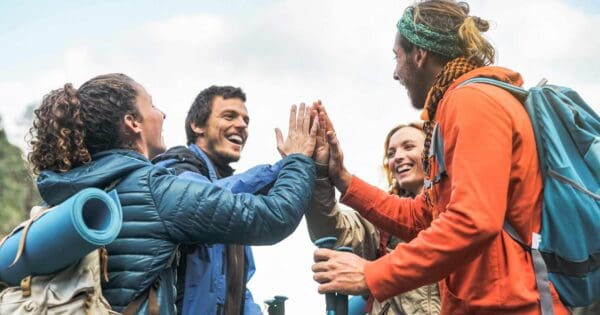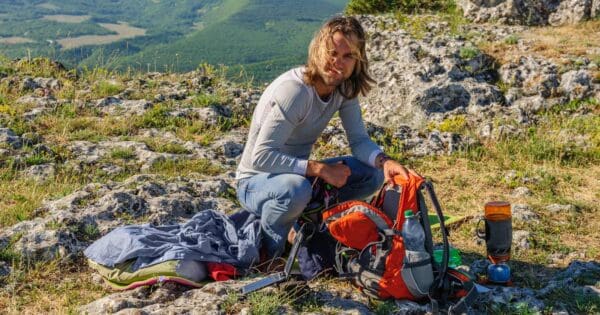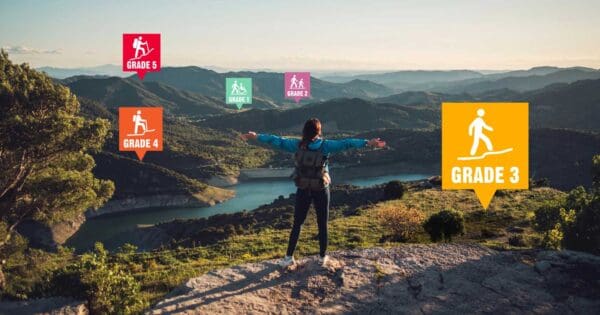
The 7 Principles of Leave No Trace offer a clear and accessible framework of minimum impact practices for anyone visiting the outdoors, whether in remote wilderness areas, local parks, or even your own backyard. Each Principle addresses a specific topic, providing detailed guidance to help individuals minimise their environmental impact. While the 7 Principles are well-established and widely recognised, they are not static. Leave No Trace continually reviews, evaluates, and updates the Principles based on the latest research and insights from biologists, land managers, and other experts in outdoor education. This ensures that the Principles remain relevant and effective in promoting responsible outdoor behavior.
1. Plan Ahead and Prepare
Planning ahead and preparing for a trip is crucial for several reasons. It helps ensure the safety of both individuals and groups by allowing for proper risk assessment and mitigation. It also enables adherence to Leave No Trace principles, minimising any damage to natural resources and ensuring the preservation of the environment. Well-prepared trips are more likely to achieve their goals safely and enjoyably, enhancing the overall experience. Additionally, planning ahead fosters self-confidence and provides valuable opportunities for learning more about the natural world.
- Know the regulations and special concerns for the area you’ll visit.
- Prepare for extreme weather, hazards, and emergencies.
- Schedule your trip to avoid times of high use.
- Visit in small groups when possible. Consider splitting larger groups into smaller groups.
- Repackage food to minimise waste.
- Use a map and compass to eliminate the use of marking paint, rock cairns or flagging.
2. Travel and Camp on Durable Surfaces
Land management agencies construct trails to provide clear, defined routes that concentrate foot and stock traffic, reducing the impact on the surrounding environment. While constructed trails do impact the land, they are an essential response to the reality that people travel through natural areas. By focusing travel on designated trails, the likelihood of multiple, scattered routes forming and damaging the landscape is minimized. It is better to have one well-designed route than several poorly chosen paths. Trail use is strongly recommended whenever possible, and travelers should remain within the trail’s width, avoiding shortcuts around trail switchbacks, which are designed to prevent erosion on steep slopes. When taking breaks along the trail, travelers should make space for others and, if opting to move off-trail, should adhere to the principles of responsible off-trail travel.
- Durable surfaces include established trails and campsites, rock, gravel, dry grasses or snow.
- Protect riparian areas by camping at least 200 feet from lakes and streams.
- Good campsites are found, not made. Altering a site is not necessary.
- In popular areas:
- Concentrate use on existing trails and campsites.
- Walk single file in the middle of the trail, even when wet or muddy.
- Keep campsites small. Focus activity in areas where vegetation is absent.
- In pristine areas:
- Disperse use to prevent the creation of campsites and trails.
- Avoid places where impacts are just beginning.
- In popular areas:
3. Dispose of Waste Properly
The waste humans generate while enjoying outdoor spaces can have significant negative impacts if not disposed of properly. It is essential to anticipate the types of waste you will need to manage and familiarise yourself with the appropriate disposal methods for each type in the area you are visiting. The Leave No Trace principles encourage outdoor enthusiasts to be mindful of the impacts they leave behind, as these can affect other people, water sources, and wildlife. Proper waste management is key to preserving the natural environment for future generations.
- Pack it in, pack it out. Inspect your campsite and rest areas for trash or spilled food. Pack out all trash, leftover food, and litter. Burning trash is never recommended.
- Deposit solid human waste in catholes dug 6-8 inches deep at least 200 feet from water, camp, and trails. Cover and disguise the cathole when finished.
- Bury toilet paper deep in a cathole or pack the toilet paper out along with hygiene products.
- To wash yourself or your dishes, carry water 200 feet away from streams or lakes and use small amounts of biodegradable soap. Scatter strained dishwater.
This article here emphasises on the importance of proper sanitation during hiking or bushwalking, especially when needing to use the toilet. Bushwalkers are advised to use toilets where available and to research their availability along the trail. If toilets are not available, you should follow Leave No Trace ethics, which may involve burying waste or packing it out, depending on local regulations. The article highlights that poor waste management can harm both the environment and wildlife.
4. Leave What You Find
The items we encounter in nature each have a role to play, either in the ecosystem or in telling the story of the landscape. By leaving these items in place, we help preserve both the environment and its history. Allowing others the opportunity for discovery enhances their experience, so it is important to leave rocks, plants, archaeological artifacts, and other objects of interest as you find them. This practice ensures that these elements remain intact for future visitors to enjoy and learn from.
- Preserve the past: observe cultural or historic structures and artifacts, but do not touch them.
- Leave rocks, plants, and other natural objects as you find them.
- Avoid introducing or transporting non-native species.
- Do not build structures, furniture, or dig trenches.
5. Minimise Campfire Impacts
ampfires, once essential for cooking and warmth, are deeply rooted in history and tradition, and for many, camping wouldn’t be the same without one. Building a campfire is an important skill for every camper to learn. However, the overuse of campfires and the growing demand for firewood have led to the degradation of the natural appearance of many areas. Additionally, wildfires, primarily caused by human activity, continue to threaten outdoor spaces. To minimise the impact of campfires, it is important to keep a few key practices in mind, such as using established fire rings, keeping fires small, and ensuring they are fully extinguished before leaving. These steps help protect the environment while still allowing campers to enjoy the warmth and tradition of a campfire.
- Campfires can cause lasting impacts on the environment. Use a lightweight stove for cooking and enjoy a candle lantern for light.
- Use established fire rings, pans, or mound fires where fires are permitted.
- Keep fires small. Use only sticks from the ground that can be broken by hand.
- Burn all wood and coals to ash, put out campfires completely, then scatter cool ashes.
6. Respect Wildlife
Whenever you are in an outdoor space, you are in the natural habitat of many wild animals, and it is essential to minimise your impact on them. Human interactions with wildlife can lead to negative consequences, such as aggressive animals, a decline in ecosystem health, and the relocation or euthanisation of animals. These impacts can all be avoided if visitors approach wildlife with respect and follow guidelines that protect both the animals and their habitats. By maintaining a safe distance, refraining from feeding animals, and staying on designated paths, we can help preserve the integrity of natural environments and ensure positive outcomes for both wildlife and humans.
- Observe wildlife from a distance. Do not follow or approach them.
- Never feed animals. Feeding wildlife damages their health, alters natural behaviors, and exposes them to predators and other dangers.
- Control pets at all times, or leave them at home.
- Avoid wildlife during sensitive times: mating, nesting, raising young, or winter.
7. Be Considerate of Other Visitors
One of the most important aspects of outdoor ethics is maintaining courtesy toward others, as it contributes to a more enjoyable experience for everyone. Excessive noise, uncontrolled pets, and damage to the environment can detract from the natural beauty and peace of outdoor spaces. By being considerate of others, we ensure that everyone, regardless of how they interact with nature, can enjoy its benefits and serenity. Practicing respect and mindfulness creates a positive atmosphere in the outdoors, allowing all visitors to have a rewarding experience.
- Respect others and protect the quality of their experience.
- Be courteous. Yield to other users on the trail.
- Greet riders and ask which side of the trail to move to when encountering pack stock.
- Take breaks and camp away from trails and others.
- Let nature’s sounds prevail. Avoid loud voices and noises.
One of the most important components of outdoor ethics is to maintain courtesy toward other visitors. It helps everyone enjoy their outdoor experience. Many people come to the outdoors to listen to nature. Excessive noise, uncontrolled pets and damaged surroundings take away from the natural appeal of the outdoors.
I am constantly amazed at the rubbish people leave on the trail. Everything from food containers to toilet paper. Hike using the Leave no trace principles.
What you pack in you need to pack out.
Copyright: The Leave No Trace Center for Outdoor Ethics
The Leave No Trace copyrighted Seven Principles, trademarked logo, associated artwork and texts are the property of the Leave No Trace Center for Outdoor Ethics. With permission from the Leave No Trace Center for Outdoor Ethics and under specific circumstances, the organization extends use of its logos and texts.






THA. I know we have had this discussion before and I think this is something that all walking groups, individuals and adventurers should consider before posting.
I would like to add another to those principles and that is
8) Leave no digital trace.
Just as we try to leave no trace we have passed this way physically many believe that this should also apply to the digital world.
I think its great that pictures are posted to let people know how beautiful it is “out there” but as we discussed the beauty should be de identified.
The principle of ” leave no digital footprint” needs to join those other principles.
Peter Lane totally agree. I’ve spoken at length with leave no trace about this. They have decided that digital is not included in the core seven principles, and as this article you have commented on is copyright to them, I cannot edit their content. Instead, I wrote that other article I shared with you to address this issue. You may want to read Leave No Trace’s comment on digital here: https://lnt.org/social-media-guidance/
Thank you Tha! Will read with interest. We have always had guide books and walking books(eg John Chapmans SW) but social media and the digital age is a whole different beast!
The damage that can be done by a post can FAR outway an individual sleeping and walking on hard ground. 😏
I think Leave no trace needs to re evalute and maybe continued rational argument from concerned walkers may get the point across.
I know you agree and support this so I guess this is the correct place to have a discussio?
Peter Lane Thank you for engaging on this important topic. I agree that the digital age, particularly social media, presents challenges that traditional guidebooks like John Chapman’s didn’t face. The instant reach and influence of posts can lead to overcrowding or harm to delicate ecosystems.
I do agree and support this. My conversation with Leave No Trace does not appear to have altered their position. However, maybe if more advocates—such as you and the group you have been discussing this with—also communicate with Leave No Trace directly, it may make a difference. They may, in fact, consider adopting this as an official eighth principle.
I’ll keep doing what I can to advocate for responsible digital sharing, and I encourage others to also have their say. Together, we can work to protect both the environment and the sense of discovery for future hikers. If you have specific ideas about how we, as a community, can approach this issue, I’d love to hear them.
Have been thinking about how this could become more widespread.
I have been individually responding to various posters with mixed results. Mostly negative I am afraid .
I have had some communications with bushwalking clubs. Some are pro the leave no digital footprint but others who I wont name blithely continue to post with detailed instructions for site and access.
The social media flood gates are relentless with many wanting to be seen but not considerig the cosequences.
The only way I can see forward is grassroots education at a club level . Unfortunately the Parks service in all states seem hellbent on being the worst offenders.
In Tassie they have a responsble walking / leave no trace poster in every imaginable spot( loos etc) and dont seem to advertise walks but NSW is the exact opposite with parks staff showing walks and access as part of their posts.
The solution needs to be both at a National/ StateParks level where education of leave no trace walking needs to include a leave no digital trace message as well as at a club level. How to tackle facebook though is beyond me😒
I think the size of the problem and mentality of the posters/ influencers is a bridge too far!!
I’m a bit surprised that catholes are the only option suggested for solid human waste. Some places that’s no problem – like in rainforests with deep compost that makes it very easy to dig deep enough. In some places (rocky, alpine etc), it’s virtually impossible to dig a proper hole, or in places that have become very popular, poo tubes are a far better option. You can use DIY containers, or purpose-made ones from PVC pipe. Available at some Parks offices in Tassie. Strongly recommended for places without toilets. At the very least, encourage people to pack out their used toilet paper. I’ve triple-bagged mine for years and never had a problem.
Kathy Cotton totally agree, as mentioned to Peter Lane, the article you have read is a direct extract from the official Leave No Trace Principles. I have written an article that addresses the concerns you raised here: https://www.trailhiking.com.au/health-and-hygiene/going-to-the-toilet-on-a-hike/
Kathy Cotton likewise. A poo tube is a necessity these days on the Main Range in winter as cat holes are impossible and the summer melt can leave some pretty nasty things littering the ground not to mention the impact on the water supply. Likewise in rocky Central Aus. The area around Lake Rhona was just disgusting with users not even bothering with catholes!!!
One technique if you are using catholes is to use them on thewalk BETWEEN camp sites rather than completely fouling a spot.
Given the increase in users on many walks I think this is another thing that the Parks should be encouraging in their blurbs.
Weight is an issue with the homemade PVC versions and the commercial bags etc are expensive.
I have been “experimenting” with a dry bag, cat litter and recyclable plastic bags( and trying not to fall whilst skiing!)
Maybe the Leave No Trace website needs continued prodding on some of these issues…..
Peter Lane great info and tips. Agree the more people out there, the more we need to be taking these matters seriously. I’ll have a look through my content to make sure I’m advocating catholes as a last resort and it’s best to pack everything out.